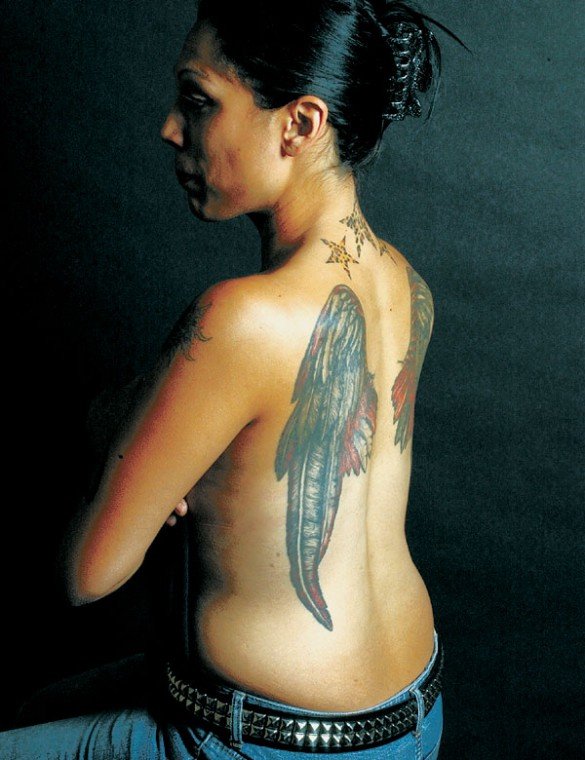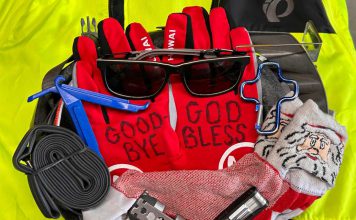Tattoos and piercings are becoming more and more popular. How
can you know what’s right for you?
By Amanda J.S. Kaufmann Special to South Valley Newspapers
It’s not for everyone, but for some, getting a tattoo or piercing is as natural as, well, getting a tattoo or piercing. With ear-piercing stations sprinkled throughout malls, American society has definitely brought this rite of passage into the mainstream.
The proliferation of tattoo and body-piercing studios may not mean a skull and crossbones for Jane’s 16th birthday (it’s illegal anyway), but it does speak of a widening circle of acceptance of the ancient art of body adornment.
It’s Not Just for Sailors
The time has come to purge the image of rowdy patrons tripping their way into the all-hours tattoo parlor. These days, getting a tattoo or body piercing is more akin to going to the dentist, with appointment times, sterile conditions, and, instead of the dental drill, the buzz of the tattoo gun.
In California, you must be over the age of 18 to partake in the tattooing and body piercing experience. Be prepared to sign a release stating you know what you’re doing, and follow your body artist’s “aftercare” instructions, which may read like the post-op care guide you receive from a hospital. But, really, it’s fun!
Obviously, the caliber of body artist contributes a great deal to the experience and results. If you’re serious about your body art, you will likely visit studios, peruse portfolios, and give some thought to what you want embedded in your skin. Contributing to this time for reflection is the general busyness of many studios.
“I’m booked until February,” says Marty Maaske, tattoo artist at El Toro Body Shop in Morgan Hill. “It’s kind of ridiculous.”
Averaging two sessions per day, three to four hours per session, and $100 per hour, Marty puts 15 years of experience to work in creating elaborate skin art. Crosses and trees are especially popular these days, he reports. One tree sketch shows a slightly whimsical evergreen with feathery needles capped with snow. Three or four visits will transfer the image to skin, starting with an outline, and gradually adding color.
So where are people putting their tattoos these days?
“For women, the small of the back is still pretty popular,” says Maaske. It seems men will tattoo just about anything, though Marty does have a female client who wanted her face tattooed.
“She’s in her 50’s, set in life, and has other tattoos,” he explains. In other words, if you’re 18 and want your face tattooed, you may have a hard time finding someone willing to do it.
Maybe a Piercing Would Be Better …
If a tattoo sounds like a little too much of a commitment, body piercing offers a dash of flash, and a little more spontaneity as well. It’s also more affordable, starting at around $30 for a navel piercing, though there’s also the cost of jewelry.
Melissa Clayton, Marty’s partner at El Toro Body Shop, is often able to accommodate walk-ins, and will walk you through the process until you’re queasy. The majority of her clients are women, with the ratio around 70/30. With a stomach of steel, Melissa has pierced it all: navels, tongues, genitals … But take comfort: “If it’s not appropriate for a person’s body type, I’ll suggest alternatives,” she says.
Further boggling the mind, Melissa reveals another emerging trend in body adornment: stretching. Back to the dentist analogy, it’s like going to the orthodontist to have your braces adjusted. After the initial piercing, stretching involves a series of appointments to enlarge the piercing (hole). It’s generally done with earlobes, but the possibilities abound. This seems to be more popular among younger clients, as are some of the more exotic jewelry materials, such as water buffalo and porcupine quills.
As for the oral piercings you see and hear about, Melissa confirms that you need to take care in getting the appropriate jewelry fit in order to avoid damaging sensitive gum tissue.
“You need to downsize the jewelry as you heal,” she says.
The Pain Factor
Of course, when considering any type of body work, there’s always the age-old question: Does it hurt? There’s no easy answer, as every individual is different in his or her tolerance of pain, and some areas of the body are more sensitive than others.
Piercings, as the name implies, puncture tissue, and so can hurt. The good news is that they’re done in seconds – then it’s just a matter of healing.
Tattooing a fleshy area of the body may take on more of a vibrating sensation, while a bony ankle is apt to transfer the feeling of needle pricking. If you’re “under the gun,” so to speak, for several hours at a time, this, too, may affect your pain threshold.
To Do It or Not To Do It?
For those who have done either or both, explaining the “why” to a mortified parent or cynical friend is often hard to do, and usually not the point. It’s generally something you’re comfortable with or you’re not, though attitudes on both sides may evolve.
Gilroy resident Gina West grew up around family members who had tattoos, so when she sought out her first as a teenager, there was really nothing holding her back. Ten years later, she continues to add to her collection of tattoos and piercings, with a work in progress on both her arm and back. She reports some people’s dismay at her form of self-expression.
“I bartended and waitressed, and had to cover up. They thought the clientele would be offended,” she says. Now working in construction, she reports no issues, though she does wish the first tattoo she got was better.
“I was so excited to get my first tattoo that I didn’t really pay attention to what the (tattoo artist) was doing,” she says.
Michael Green, a close friend of Marty’s and Melissa’s, recalls the spontaneity of his first tattoo.
“I just did it, and then it grew into more of a plan,” he says, confirmed by the presence of colorful, graphic patterns on his arms and legs.
Gilroy resident Jon Tamada got his first tattoo when he was 38, and followed it with another a few years later in tribute to a friend who passed away.
“Her nickname was Turtle, and that is what I have on my left shoulder. I wanted it to always remember her and honor her life,” he explains.
As a manager at Mt. Eden Floral Company in Mountain View, Jon is also able to speak about the issue of tattoos and piercings in the workplace – specifically his company’s policy on it.
“The flower industry is nonformal and very relaxed, with most of the customers being more artistic than most industries. I feel it is the individual’s performance, not a stereotype, that makes an employee valuable,” he says.
Jim Angelopoulos, manager of Scrambl’z Diner in Morgan Hill, reports a similar regard to employees with tattoos and piercings.
“We’re all a family here, and individuals can be themselves,” he says. “If somebody has something really out there, maybe we’d ask them to cover it up, but it hasn’t come up.”
Still, some people with tattoos and piercings may decide they don’t want them anymore. A piercing, unless it’s been stretched or otherwise caused disfigurement (such as due to scar tissue), is easily removed.
A tattoo, on the other hand, is both difficult and expensive to remove, requiring medical intervention. Most popular now is laser removal, where pulses of light are aimed at the ink pigments, causing them to break up and be absorbed into the body.
Darker inks respond fairly well to this technology – it’s the lighter colors, such as green and yellow, that cause problems. No matter what, several treatments are generally required, and these can run $300 to $1,000 apiece.
“My aunt had a tattoo removed,” says Gina. “It worked out well for her. I looked into it once, just to see, and it costs so much more than getting a tattoo, I just decided to get more tattoos.”











